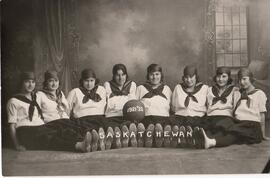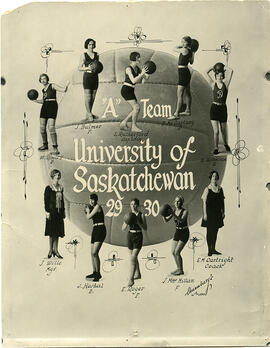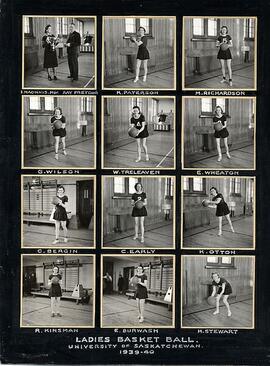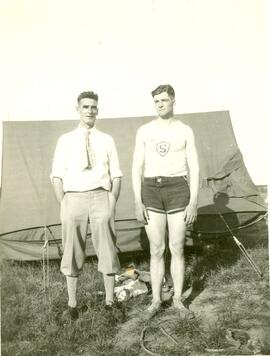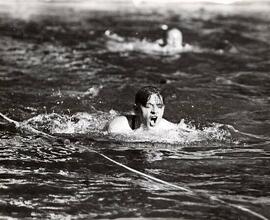University of Saskatchewan Women's Basketball Team - Group Photo
- A-926
- Item
- 1921-1922
Posed indoor image of team members in uniform sitting on floor and touching a basketball with their feet, 'Saskatchewan' is printed on the soles of their shoes. Players (l to r): H. Smith, E. Knox, Dorothy Mooney, Mable Emma Sharp, Isabel Stewart Manson, Pauline Creighton, Florence Wilson, Dorothy Mitchell.
Bio/Historical Note: The colours green and white were chosen in 1910 by Reginald Bateman, a native of Ireland and the first English professor at the University of Saskatchewan. The name ‘Huskies’ was included in an article in the 20 September 1932 Star-Phoenix: “The Varsity Stadium yesterday morning saw the advance guard of over twenty gridiron Huskies swing into action.” One of the earliest pictures of players wearing sweaters with ‘Huskies’ on them was the 1932-1933 Greystone yearbook, showing the men’s hockey team in uniforms with the new name. Women's teams were using ‘Huskiettes’ by 1937.

